Challenges in Marine Biology: Climate Change and Beyond
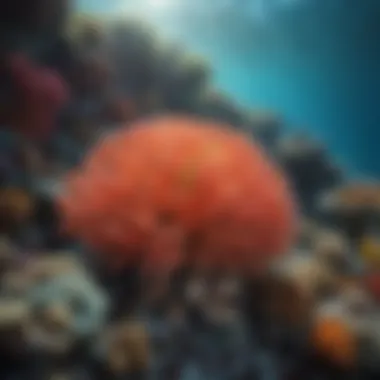
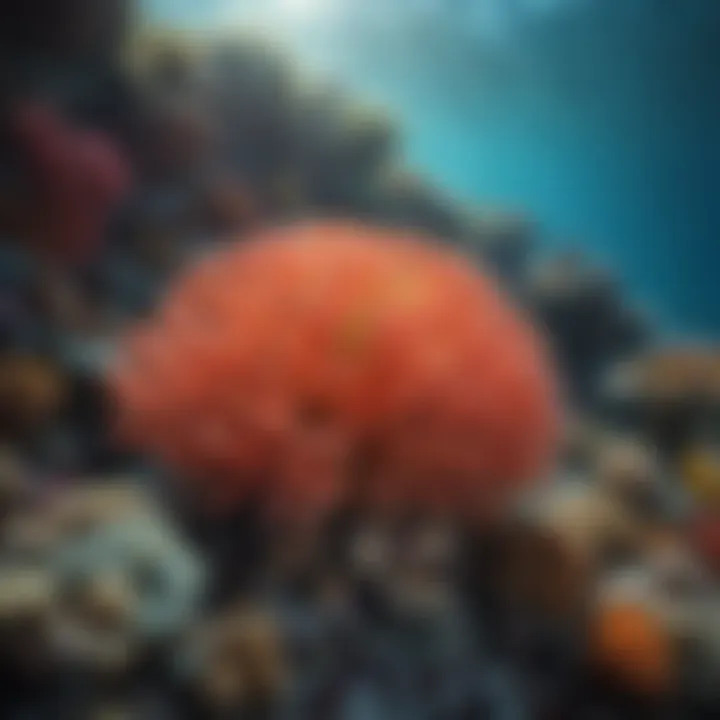
Intro
Marine biology is not just a subject confined to textbooks; it’s a dynamic field addressing the real-world issues that threaten our oceans. The intricate balance of marine ecosystems is at a tipping point, influenced by the relentless forces of climate change, pollution, and human activities. As surfers, paddleboarders, kitesurfers, instructors, and gear reviewers, understanding these issues is crucial not just for our enjoyment of the water but also for the future of marine life.
We are only beginning to scratch the surface in understanding how these forces shape our seas. From the coral reefs that teem with vibrant life, only to face bleaching events due to rising temperatures, to the challenging consequences of overfishing that deplete stocks critical to both the ocean and local communities, current challenges in marine biology demand our attention.
The aim of this article is to shine a light on these pressing concerns while contextualizing the relationships within marine ecosystems. By examining the latest research and insights, we navigate not just the problems but also potential solutions. Through various discussions, we will cover issues such as biodiversity loss, the plight of endangered species, and the role of marine protected areas. Each element intertwines, revealing a fascinating narrative that can either embolden or halt our progress toward sustainable practices.
With that in mind, let's dive deeper into the factors impacting marine biology today.
Preface to Marine Biology
Marine biology stands as a crucial pillar in understanding our planet's intricate systems. Given the ocean's vast expanse, it serves not just as a habitat for countless organisms but also plays a significant role in the Earth's climate, weather patterns, and carbon cycling. The urgency to explore marine biology stems from the alarming consequences of human activity, which has reared a myriad of challenges that threaten the stability of marine ecosystems.
Understanding marine biology necessities delving into its complexity. It links ecology, conservation, and sustainability directly to human interaction with the sea. The ocean affects everything from the air we breathe to the food we consume, creating a direct line between marine health and human welfare. This interplay emphasizes the importance of marine biology both in academia and practical application.
The knowledge derived from marine biology is essential in creating solutions to pressing global issues. It feeds into the development of policies aimed at protecting marine life, which has seen a dramatic decline due to overfishing, pollution, and climate change. By studying these environments, we can begin to comprehend the depth of impact that daily human decisions have on the aquatic realms.
This article seeks to peel back the layers of marine biology, equipping the reader with key insights about the significant challenges facing marine ecosystems. We will venture into details about climate change, pollution, and biodiversity loss, amongst other factors. In doing so, we aim to foster a deep understanding that can inspire responsible action and informed choices, especially for those spending their days on the water — surfers, paddleboarders, kitesurfers, and instructors.
Definition and Scope
Marine biology can be defined as the study of marine organisms, their behaviors, and interactions with the environment. Its scope encompasses various disciplines including biology, chemistry, oceanography, and geology. This interdisciplinary approach allows for a comprehensive understanding of marine life in both ecological and evolutionary contexts.
Laying the groundwork, marine biology touches upon a multitude of subjects. From the microscopic phytoplankton that form the base of the oceanic food web to the grand migrations of whales, each aspect reveals layers of complexity in marine ecosystems. By studying these organisms, scientists can unravel how they respond to changes in their environment — a critical focus in light of ongoing climate changes.
Historical Context
The journey into marine biology has roots that stretch back centuries, influenced by cultural and scientific advancements. Early studies began with naturalists, such as Aristotle, whose observations illustrated the joy of inquiry into the ocean's bounty. However, significant leaps in marine biological understanding took real form during the 19th century. The voyages of exploration, including those of Charles Darwin and the HMS Challenger expedition, opened the lid on the vastness of marine life.
The incorporation of technology has changed the landscape dramatically. In the 20th century, advances in underwater exploration tools, like submarines and remotely operated vehicles (ROVs), have allowed scientists to observe and study marine environments that once remained hidden. This accessibility has revealed a plethora of new species and ecosystems, yet it has also intensified the conversation around conservation, as we begin to understand the consequences of human exploitation.
The historical development of marine biology shows a constant dance between discovery and the moral obligations that follow. As we delve deeper into the ocean's realms, it becomes imperative to tread carefully, balancing our quest for knowledge with the need to protect these ecosystems from the impending threats they face.
Significant Challenges in Marine Ecosystems
The health of marine ecosystems remains a cornerstone for both the planet and humanity. Understanding the significant challenges these ecosystems face is crucial, as they directly impact everything from global weather patterns to local economies, particularly for folks involved in water sports like surfing, paddleboarding, and kitesurfing. It's not just about the fish in the sea; it’s a complex interplay involving climate change, pollution, and biodiversity that can alter these underwater worlds dramatically.
Impact of Climate Change
Sea Level Rise
Sea level rise stands as an immediate and pressing concern. As the temperature of the ocean increases, glaciers and ice sheets melt, causing the seas to creep higher along coastlines. This gradual inundation can lead to the displacement of coastal communities and loss of habitat for numerous marine species. The key characteristic here is its slow but relentless pace; it's like the tide pulling back before a huge wave. In this article, understanding sea level rise becomes vital for grasping how coastal sports enthusiasts may soon find their favorite spots altered or even lost.
A unique feature of sea level rise is its dual impact: it not only affects humans but also compromises vital ecosystems like mangroves and coral reefs. When sea levels rise, these regions can either become submerged or experience changes in salinity, which can dramatically affect their ability to thrive. People relying on these ecosystems for fishing or recreation must be mindful of how these shifts could impact their activities. The advantage here is that awareness can lead to proactive conservation efforts.
Ocean Acidification
Ocean acidification mirrors a similar threat, albeit from a different angle. As more carbon dioxide gets absorbed by the water, it reacts and produces carbonic acid, which lowers the ocean's pH. The immediate consequence? Impaired shell formation in marine creatures like oysters and coral reefs. These changes signal not just a loss of biodiversity, but a tipping point for the entire food web.
What's particularly noteworthy about ocean acidification is its extensive reach. Nearly every marine organism is affected, from the plankton at the ocean's surface to the sharks that swim in the depths. For Instructors or gear reviewers, the impact of deteriorating shellfish populations may threaten food sources directly tied to your local surf and leisure activities. On the whole, this poses disadvantages as species struggle to adapt to changing conditions, thus necessitating focused conservation strategies to maintain species diversity.
Temperature Fluctuations
Temperature fluctuations are another piece of the puzzle. The oceans have been warming due to climate change, but fluctuations can still occur seasonally or even day-to-day. Marine life is both sensitive and resilient, which means these thermal changes can lead to migrations, reproduction issues, or mortality in the worst cases. This characteristic makes temperature fluctuation particularly relevant for water sports; warmer waters may bring more tourists, but they can also disrupt local fish populations crucial for community sustenance.
Additionally, extreme weather events are expected to become more frequent as the climate warms. The unique feature of these fluctuations is how they can change the game, impacting breeding grounds and altering predator-prey dynamics. While the warmer waters might entice paddleboarders and surfers, fish that keep their populations in check may not be able to adapt as quickly, causing imbalances. Such outcomes can be disadvantages for recreational fishing or wildlife viewing, making it imperative to stay informed.
Pollution Sources and Effects
Plastic Pollution
Plastic pollution is like an unwanted houseguest that never leaves. It’s estimated that millions of tons of plastic enter the oceans each year, creating debris fields that harm marine creatures and ecosystems. What makes plastic pollution a crucial topic for this article is its visibility; stranded surfboards and kiters dodging plastic debris is an image that lingers in public minds. The very real risks posed to fish and marine mammals by ingesting plastic or becoming entangled change the conversation about our oceans.
Uniquely, plastic doesn't just disappear; it breaks down into microplastics that impact even the smallest organisms, traveling upward through the food chain. The ramifications can extend to those who thrive on these systems, as contamination could poison local fishing stocks. Awareness and management strategies aimed at reducing plastic waste can elevate the conservation dialogue significantly.
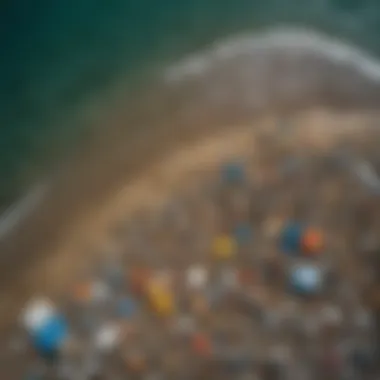

Chemical Runoff
Chemical runoff emerges from agricultural practices, industrial activities, and urban development, flowing into rivers and finally to the oceans. This type of pollution can lead to algal blooms that suffocate marine life by depleting oxygen. The key factor here is the invisible nature of chemical runoff; it’s not something that the average surfer would notice while catching waves unless it manifests as dead zones or foul-smelling water.
Chemical runoff’s unique feature lies in its wide-ranging effects. Nutrient overloads not only harm resident fish populations but can also disrupt ecological balances in local estuaries that serve as breeding grounds. The implications are significant, making this topic essential for connecting with water enthusiasts who depend on healthy ecosystems for their hobbies and livelihoods.
Oil Spills
Oil spills grab headlines when they occur, yet their implications stretch far beyond the initial catastrophe. When oil coats the surface of the sea, it impacts everything from microalgae to marine mammals. An immediate concern is the toxins released into the ecosystem, creating hazardous scenarios for all forms of marine life. The characteristics of oil spills make them a dramatic choice for this article—a flashpoint capturing media attention and arousing public concern.
What’s noteworthy about oil spills is how the recovery process can last for years, with lingering effects affecting food webs. For sporting enthusiasts, such events can cripple tourism and recreational opportunities in heavily impacted areas. Understanding how to respond to these accidents is invaluable for all involved in marine conservation and recreation, thus emphasizing the importance of preventative measures to avoid future spills.
Biodiversity and Species Threats
Biodiversity serves as the bedrock of marine ecosystems, playing an integral role in maintaining the balance necessary for life underwater. As human actions increasingly encroach upon these ecosystems, the threat to various species has become a looming concern. A healthy diversity of species creates resilience against environmental changes and disturbances, and why it is essential to focus on the intertwined fates of different marine organisms. The effects of biodiversity loss ripple through the food web, impacting everything from the tiniest plankton to the largest marine mammal.
Endangered Species
Coral Reefs
Coral reefs are often referred to as the "rainforests of the sea" due to their staggering variety of life. They are, indeed, a hub of marine biodiversity, housing approximately 25% of all marine species despite covering only 0.1% of the ocean floor. Their complex structures provide shelter and breeding grounds for countless fish. The delicate balance of these ecosystems is precarious; the health of coral reefs is an indicator of ocean health. However, climate change, pollution, and overfishing threaten their survival. Reefs are stunningly beautiful but incredibly fragile, making their preservation crucial. If the coral dies, the species that rely on them for survival follow suit, emphasizing the need for urgent conservation measures.
Marine Mammals
Marine mammals, from majestic whales to playful dolphins, not only contribute to the biodiversity of oceans but also hold significant ecological roles. These animals can indicate the overall health of marine environments, acting as a barometer for human impacts. They are often at the top of their food chains and help regulate populations of other marine species. Sadly, many marine mammals are endangered due to habitat destruction, climate change, and fishing practices that threaten their populations. Their welfare impacts not just their ecosystems but human beings as well; many communities depend on the health of these populations for economic and cultural reasons. Understanding their decline is paramount to advancing conservation efforts and ensuring these iconic species do not vanish.
Fish Populations
The diverse world of fish populations is not just crucial for food security, but they also uphold the marine ecosystem's structure. An overabundance of certain species can lead to depletion of others, creating an unbalanced aquatic environment. The loss or decline of specific fish populations not only affects the marine food web but also the livelihoods of countless fishermen and coastal communities. It's a double whammy; the depletion of fish due to overfishing can lead to ecological collapses, making recovery even harder. Thus, sustainable fishing practices must be prioritized to allow populations to recoup, ensuring the long-term viability of both fisheries and marine ecosystems.
Habitat Destruction
Coastal Development
Coastal development often seems attractive—new homes, resorts, etc.—but it carries significant ecological costs. The area where land meets sea is rich in biodiversity, and disrupting this delicate balance leads to loss of habitats critical for various marine species. Mangroves, salt marshes, and seagrasses are essential for supporting young marine life, but they are often bulldozed for construction projects. This destruction not only erodes the shoreline but also compromises the natural protection they offer against storms. The fragility of these coastal ecosystems makes them a priority for conservation efforts; preserving them is critical for both biodiversity and coastal protection.
Dredging
Dredging operations, aimed at deepening shipping channels and removing sediment, often have negative consequences for marine environments. These activities can release toxic substances buried in sediment, smother coral reefs, and disrupt the life cycles of local marine species. The disturbance caused by dredging leads to habitat loss and the potential extinction of sensitive benthic organisms. It’s a challenge that's often overlooked but critical to address; the benefits of maintaining navigable waters come at a high ecological cost.
Seabed Mining
Seabed mining is a growing concern in the push for resources like minerals critical for technology. Mining operations disturb the ocean floor, destroy habitats, and resuspend sediments that can cloud the waters and smother marine plants. Unique organisms that have adapted to these specific habitats can be lost forever. The long-term effects of seabed mining are still largely unknown, amplifying the urgency to consider the ecological trajectory over short-term economic gains. We need a balance between resource extraction and protecting our ocean's heritage.
"The health of our oceans directly reflects the wealth of life they support. Conservation of biodiversity is not just an environmental issue but a human issue."
Overfishing and Its Consequences
Overfishing stands as a significant challenge within marine biology, echoing through the tides of our oceans as a critical threat to aquatic life and human livelihoods alike. This issue is not just about the depletion of fish stocks; it carries broader implications that resonate through ecosystems and economies. Understanding these consequences requires a deep dive into commercial fishing practices and the intricate balance of marine ecosystems, all of which are essential for sustaining the health of our oceans.
Commercial Fishing Practices
Commercial fishing has evolved from traditional techniques to highly industrialized methods, drastically altering the landscapes of marine life. Techniques such as trawling, longlining, and purse seining allow fishermen to capture vast quantities of fish, yet they come with a heavy toll on marine biodiversity. For instance, trawling can inadvertently catch non-target species, or bycatch, which often includes endangered species such as sea turtles or young sharks.
Furthermore, the use of advanced technology, while increasing efficiency, often leads to overcapacity in fishing fleets, straining already vulnerable populations. Some notable points regarding commercial fishing practices include:
- High Demand and Economic Pressure: The increasing global appetite for seafood drives aggressive fishing practices, creating unsustainable pressure on fish stocks.
- Lack of Effective Regulation: Many regions struggle with inadequate enforcement of fishing quotas, leading to unregulated catch levels.
- Environmental Impact: Destructive practices tear through the ocean floor, destroying habitats essential for the breeding and survival of various species.
In essence, the choices made within the realm of commercial fishing today resonate far beyond the immediate gains, threatening the sustainable future of marine environments.
Impact on Ecosystem Balance
The influence of overfishing extends deep into the ocean's web of life, disrupting the delicate balance that sustains ecosystems. Fish play crucial roles within food webs, serving as both predator and prey. The removal of significant numbers of fish can lead to trophic cascades where the population dynamics of various species become unbalanced. For example, when a top predator, like a large fish or shark, is overfished, it results in an overabundance of smaller fish, which in turn can deplete the levels of zooplankton, leading to an unstable ecosystem.
To illustrate further:
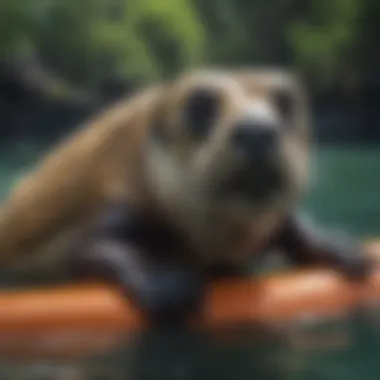
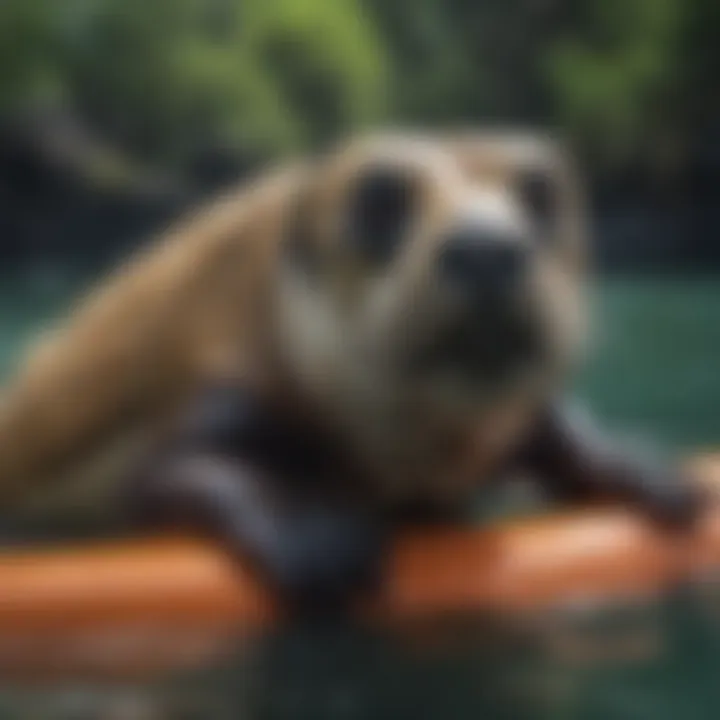
- Loss of Biodiversity: Overfishing reduces the diversity of fish populations, making ecosystems more susceptible to diseases and environmental changes.
- Altered Habitats: Declines in certain species can lead to changes in habitat structure. For instance, the removal of herbivorous fish can lead to unchecked algae growth, choking coral reefs and negatively affecting marine life that depends on these habitats.
- Economic Consequences: The decline in fish stocks not only limits the availability of seafood but also threatens the livelihoods of communities reliant on fishing, further complicating the socio-economic fabric of coastal areas.
“Sustainable fishing practices are not just a dream; they are a necessity woven into the very fabric of marine conservation.”
Marine Protected Areas and Conservation Efforts
The pressing issues confronting marine ecosystems today necessitate an urgent reevaluation of the ways we manage and conserve our oceanic environments. Marine Protected Areas (MPAs) serve as one of the fundamental strategies in the toolkit of conservation efforts.
Establishment and Effectiveness
Policies and Regulation
Policies and regulations play a pivotal role in establishing Marine Protected Areas. These frameworks set the stage for designating specific zones in oceans and coastal areas that are off-limits or subject to strict regulation concerning human activity. One key characteristic of these policies is their ability to help local communities while protecting marine biodiversity.
Policies like the Convention on Biological Diversity outline principles of sustainable use and conservation, which not only guide the creation of MPAs but also foster international cooperation. They create a beneficial environment for establishing MPAs and enforcing rules governing fishing, tourism, and other marine uses. The uniqueness of these policies lies in the adaptive management techniques they promote, allowing for adjustments based on scientific research and community feedback. However, challenges persist, such as conflicting interests among stakeholders or insufficient funding, which can hinder the enforcement and practicality of regulations, though the benefits can far outweigh the disadvantages.
Community Involvement
Community involvement is indispensable in the establishment and success of Marine Protected Areas. When local fishers, beachgoers, and concerned citizens actively participate in planning and managing these spaces, the outcome is often much more favorable. A key characteristic of community involvement is its capacity to build local stewardship—a sense of ownership among the residents about their marine resources.
Engaging communities can lead to more effective conservation outcomes because these individuals typically have deep knowledge of the local environment. For instance, local input often leads to better delineation of MPAs, ensuring they truly reflect the needs and practices of those most affected. Moreover, programs that encourage local citizenry to monitor marine health not only serve to educate but also empower—turning passive observers into active caretakers. The biggest disadvantage is that sometimes community priorities may conflict with scientific recommendations, leading to tensions or slow progress. Still, the advantages of ensuring local investment in conservation goals cannot be overlooked.
Success Stories
Reviving Fish Stocks
Reviving fish stocks in marine environments speaks volumes about the potential success of Marine Protected Areas. These areas can allow fish populations to rebound by prohibiting or regulating certain fishing practices. A hallmark of this recovery is the data showing increased fish biomass in MPAs compared to unprotected areas. For example, in the Great Barrier Reef, specific MPAs have seen a marked improvement in fish diversity and abundance, which in turn benefits local economies dependent on fishing.
The distinctive feature of reviving fish stocks through MPAs is its ripple effect on the entire food chain. Vegan predators and prey can achieve balance, and the greater biodiversity adds resilience to the ecosystem against phenomena like climate change. The downside is that the restoration of stocks can take time and may require ongoing adjustments in regulations as fish populations oscillate due to natural and anthropogenic pressures.
Coral Rehabilitation
Coral rehabilitation efforts represent another shining example of successful marine conservation. In areas hard-hit by coral bleaching and other stressors, strategic MPAs allow for focused restoration activities such as coral gardening and transplanting. Highlighting sites like Palau, where MPAs have been instrumental in combating coral degradation, emphasizes the effectiveness of this approach.
The unique feature of coral rehabilitation is its dual aim: safeguarding existing coral populations while actively rejuvenating devastated ecosystems. The involvement of divers and marine biologists in these initiatives, fundamentally, combines scientific know-how with grassroots engagement. On the other hand, challenges like funding and the long time frames associated with coral recovery can be obstacles. Despite these drawbacks, the successes achieved through coral rehabilitation within MPAs inspire hope for broader marine habitat recovery initiatives.
“Marine Protected Areas are not just lines on a map; they represent our commitment to preserving the oceans for future generations.”
In summary, Marine Protected Areas and conservation efforts are fundamental to nurturing marine ecosystems facing unprecedented threats. By considering the establishment mechanisms, community involvement, and studying success stories, stakeholders can ensure these regions thrive. While challenges remain, the benefits of MPAs in fostering ecosystem recovery and resilience are evident.
Technological Advancements in Marine Research
Technological advancements in marine research have revolutionized the way we understand and interact with our oceans. These innovations offer new tools that are not only enhancing our knowledge of marine ecosystems but also informing conservation efforts. As the health of aquatic habitats faces unprecedented threats, the integration of technology becomes essential in tackling contemporary marine challenges. From monitoring changes in the environment to understanding genetic diversity, modern technology plays a crucial role in shaping marine biology today.
Remote Sensing and Monitoring
Remote sensing and monitoring technologies have opened new windows into the vast, often inaccessible marine environments. These tools allow researchers to gather and analyze data on a scale previously thought impossible.
Some of the key benefits of remote sensing include:
- Data Collection: Satellites and drones can cover extensive ocean areas quickly, providing real-time information on temperature, salinity, andchlorophyll concentrations.
- Ecosystem Health Assessment: By monitoring water quality and identifying harmful algal blooms, we can assess the health of marine ecosystems more effectively.
- Climate Change Insights: Remote technologies help track sea level rise, allowing scientists to model future climate scenarios and understand their implications for coastal habitats.
"With remote sensing, we're no longer piecing together the puzzle from shore but instead capturing the entire picture from the air and space," a marine biologist from a leading research institution once noted.
Considerations for the Use of Remote Sensing:
While these technologies offer immense potential, there are challenges to consider:
- Cost Factors: Initial investment in equipment and training can be significant.
- Data Overload: The vast amounts of data collected can be overwhelming. Proper analysis frameworks must be established to distill useful insights.
Genomic Technologies
Genomic technologies represent another leap forward in marine research. These advancements allow scientists to delve deep into the genetic makeup of marine species, which can inform conservation strategies and enhance our understanding of biodiversity.
Key aspects of genomic technologies include:
- Species Identification: Genetic sequencing helps pinpoint species correctly, which is vital for effective conservation efforts, especially in cases of endangered species.
- Understanding Ecosystem Dynamics: Analyzing DNA from environmental samples (also known as eDNA analysis) can reveal which species inhabit a particular area, enhancing our understanding of ecosystem compositions.
- Resilience Studies: Genomics can provide insights into how certain species adapt to changing ocean conditions, information critical for predicting future biodiversity trends.
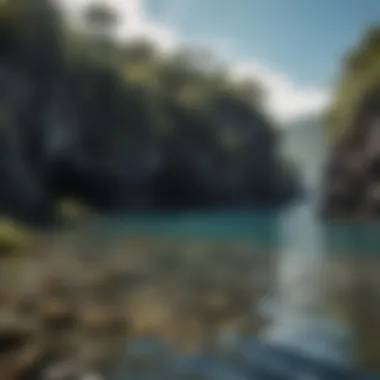

Important Considerations:
Genomic technologies are not without their own hurdles:
- Ethical Concerns: Genetic research raises ethical questions about manipulation and conservation priorities.
- Interpretation Complexities: The data generated can be complex, necessitating interdisciplinary collaboration for meaningful conclusions.
As we advance further into the 21st century, embracing these technological tools becomes vital for the future of marine biology. Integrating remote sensing and genomic technologies into our research paradigms not only improves the depth of our understanding but also helps in crafting informed policies for marine conservation.
Public Awareness and Marine Education
The health of our oceans directly correlates with the well-being of our planet. Consequently, public awareness and marine education stand as pivotal elements in addressing current challenges in marine biology. People often overlook the intricate balance maintained within marine ecosystems. Engaging the general populace through education can empower them to enact positive change. This raises not only understanding but also support for conservation initiatives crucial for marine sustainability.
Educating the public about marine life, ecosystems, and their proper functioning fosters a sense of connection, urging individuals to stretch beyond their routine lives. People can no longer afford to turn a blind eye. When individuals realize their impact—how a single plastic bottle tossed aside might end up in a sea turtle’s habitat—awareness transforms into action.
Role of Education in Conservation
Education serves as a foundation for effective conservation efforts. Consider classrooms integrating real-world marine studies in their curriculum. Students learning about coral reefs, for instance, might be compelled to volunteer for reef restoration projects. Knowledge stimulates action; the more someone knows, the greater their likelihood to participate in conservation.
Educational institutions can collaborate with marine research bodies. Such partnerships open avenues for hands-on learning experiences, exposing students to the realities of marine research.
Additionally, targeted campaigns that focus on local species and habitats make learning more relatable and impactful. For example, teaching a child about the fish in their nearby ocean can foster a sense of belonging and responsibility towards that ecosystem.
While formal education is vital, informal platforms such as community workshops or public seminars also enhance the public’s understanding. Families attending beach clean-up events can learn practical ways to reduce pollution while enjoying the beauty of the coast. By connecting education with hands-on experience, conservationists sow the seeds of responsibility in future generations.
Citizen Science Initiatives
Citizen science initiatives play a crucial role in bridging the gap between marine researchers and the general public. These programs allow everyday individuals to contribute to scientific research. This involvement creates a communal sense of purpose, making science accessible and less intimidating. For example, initiatives like the “Great Backyard Bird Count” encourage locals to monitor local wildlife, fostering a bond between them and their environment.
Similar initiatives in marine settings engage citizens in data collection for species counts or water quality measurements. Examples include the “Marine Mammal Watching” program, where volunteers estimate seal or dolphin populations. The data collected often proves invaluable for scientists who typically have limited resources. Such contributions not only enhance research but also nurture a deeper understanding of marine ecosystems by those involved.
Furthermore, social media platforms are leveraged to build community engagement around marine issues. Citizen scientists often share their experiences, encouraging others to join them. This builds momentum and spreads awareness, igniting a broader demand for marine education and conservation. Even just sharing a picture of a local beach littered with trash can inform a wider audience about the need for action.
"Engagement of local communities creates lasting bonds, transforming passive observers into active protectors of the ocean."
Future Directions in Marine Biology
Future directions in marine biology are not just a mere afterthought but a compass pointing the way forward in dealing with the plethora of issues facing our oceans today. In a world that is constantly evolving, understanding and adapting to changes in marine environments is crucial. The future of marine biology has significant implications not only for scientific inquiry but also for the ecological health of our planet, particularly in supporting activities beloved by surfers, paddleboarders, and kitesurfers.
Addressing current issues adequately requires a blend of fresh thinking and practical solutions. This section discusses policy recommendations aimed at effective marine governance and emphasizes interdisciplinary approaches that draw from various fields to enrich marine biology.
Policy Recommendations
Advocating for sound marine policies is vital. These policies should be grounded in scientific evidence and should aim to mitigate the effects of climate change, pollution, and overfishing. Key recommendations include:
- Strengthening Regulatory Frameworks: Governments need to adopt stringent policies regulating fishing quotas, ensuring sustainability. Well-defined limits can help replenish fish stocks and maintain ecosystem balance.
- Increased Funding for Research: Funds should be directed toward marine research projects that focus on ecosystem restoration, alternative fishing practices, and pollution reduction efforts. This also includes preparing for the effects of sea-level rise on coastal communities.
- Collaboration with Local Communities: Involving fisherfolk, surfers, and paddlers in the decision-making process is essential. Their local knowledge and experience can provide insights that may not be captured through formal studies.
- International Agreements: Marine issues know no borders. Encouraging international agreements, like the Convention on Biological Diversity, can help unify efforts across nations to protect underwater biodiversity.
"Sustainable policies not only shield our oceans but also ensure future generations of outdoor enthusiasts continue to enjoy them."
Implementing these recommendations will not only strive to reverse the damages induced but also foster a culture of marine stewardship, echoing in the passion of the community.
Interdisciplinary Approaches
Tackling marine challenges requires not just marine biologists, but an army of thinkers from diverse fields. Interdisciplinary approaches incorporate insights from environmental science, economics, sociology, and even technology. Here are several ways it can work:
- Integrating Technology: Utilizing drones and remote sensing technology can provide real-time data about water quality and fish population changes. This can help in more effective management decisions and conservation strategies.
- Ecosystem-Based Management: By studying the ocean as an interconnected system, researchers can better understand how the health of sea otters, for instance, influences kelp forests, which in turn affect surfing conditions. An ecosystem-based approach promotes holistic management.
- Public Engagement and Education: Lessons from social sciences can improve how marine biology communicates with the public. Campaigns that resonate with surfers’ love for clean oceans can spur action for pollution reduction or beach clean-ups.
- Policy-Making Informed by Public Health: Understanding human health impacts from pollution can lead to new policies that benefit both marine environments and public well-being.
In summary, the future directions in marine biology present vast opportunities for enhancing our understanding and protection of marine environments. By combining rigorous science with a diverse set of perspectives, we can navigate the challenges at hand and work towards a healthier, more vibrant ocean for all.
Ending
Synthesis of Key Points
The discussions throughout this article spotlight several key concerns:
- Climate Change: The sea level rise, temperature fluctuations, and ocean acidification fundamentally alter marine habitats, affecting both flora and fauna. Our oceans are warming, and species that once thrived are now facing uncertain futures.
- Pollution: From plastic debris to chemical runoff and oil spills, pollution remains a dire threat to marine life. The sheer volume of waste entering our oceans leads to critical habitat degradation and threatens the health of entire ecosystems.
- Biodiversity Loss: The plight of endangered species—such as many fish populations and coral reefs—is a devastating reality that emphasizes the need for immediate action. Key habitats are being destroyed at an alarming rate due to development, dredging, and seabed mining, impacting the broader ecological balance.
- Overfishing: The consequences of unsustainable fishing practices are glaring. Not only does it deplete fish stocks, but it also disrupts food webs and ecosystems, leading to potential collapses that could take decades to recover from.
- Marine Protected Areas: Initiatives aimed at creating marine protected areas have shown promise. By involving communities and establishing thoughtful policies, recovery stories can emerge as a beacon of hope.
In synthesizing these points, we draw a fuller picture of how intertwined human actions and marine health are. This interconnectedness reminds us that every small action we take has ripple effects across vast oceanic expanses.
Call to Action
The call to action is pronounced: it is time for surfers, paddleboarders, kitesurfers, instructors, and gear reviewers to lend their voices and influence. Here are specific ways to engage:
- Advocacy: Utilize social media platforms like Facebook and Reddit to raise awareness. Share informative content that stresses the importance of marine conservation.
- Education: Participate in or lead educational workshops that nurture a love for marine ecosystems among peers and newcomers alike.
- Sustainable Practices: Adopt and promote sustainable gear choices that do not contribute to ocean degradation—like eco-friendly surfboards and paddleboards made from recycled materials.
- Community Initiatives: Engage in local beach cleanups or join conservation groups that focus on marine life protection.
- Support Research: Help fund or volunteer for local marine research initiatives that provide valuable data on biodiversity and ecosystem health.
The ocean is calling for stewards who are committed to preserving its vastness for generations to come. If each of us plays our part, a collective impact can emerge, leading to a brighter future for marine biology and all its wonders.



